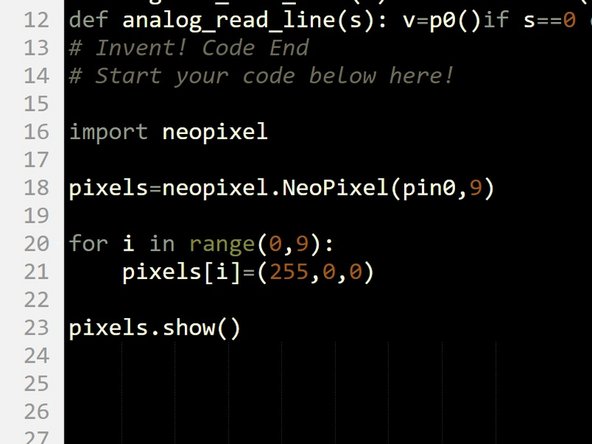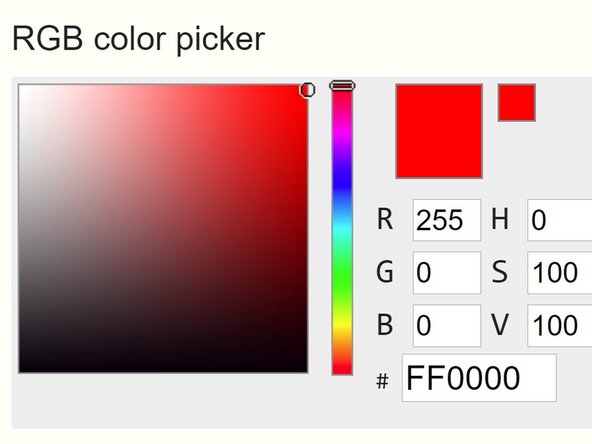Introduction
Learn how to use the Sparkle module by creating some starting lights for a race around the planet.
-
-
Sparkles are very useful - they are LEDs, just like the red/green LED from before, but much cleverer!
-
They have small chips inside them, which allow you to control many LEDs using just one output. If you look really closely you might be able to see them.
-
They are also three LEDs in one - there is a red, green and blue LED in every sparkle.
-
We can control these three internal LEDs separately, and mix them together to create any colour!
-
This is the same way pixels in your computer screen work - have a look at the chart to see all the possible colours we can make.
-
-
-
Build up your robot like the picture.
-
Plug the sparkle module into P0.
-
-
-
For now, let's test the sparkles by building the simple program in the picture - hopefully they all turn red when you program your robot!
-
Don't stare at the sparkle board for too long - it's very bright!
-
-
-
Let's go through this program and see how it works.
-
import neopixel - this loads some extra code that allows us to use the sparkles. You need this in any program you want to use them in!
-
pixels=neopixel.NeoPixel(pin0,9) - this sets up pixels to refer to a set of sparkles, connected to pin0, with 9 sparkles in total.
-
pixels[i]=(255,0,0) - with the for loop changing i from 0 to 8, this line sets each sparkle to red. pixels[0] sets the first sparkle, pixels[1] sets the second one and so on.
-
The three numbers in this line set the amount of red, green and blue respectively - so 255,0,0 sets red at full, and green and blue completely off.
-
pixels.show() - this updates the sparkles, and you need this line every time you change any of the sparkle colours.
-
Try changing the amounts of red, green and blue, and see what colours you can make.
-
-
-
Remember, we can also control each sparkle individually if we take out the for loop.
-
We can use pixels[pixelNumber]=(red,green,blue) to set the colours of individual sparkles - have a look at the sparkle board to see which sparkle is which number.
-
In programming numbers start from 0, not 1 - so for nine sparkles, the first is 0, the second is 1 and the last is sparkle 8.
-
Use three lines of code to set three sparkles to a different colour.
-
Don't forget to put a pixels.show() line at the end, or you won't see anything happen.
-
-
-
It can be difficult to know what to set the red, green and blue to to get a specific colour!
-
Try this online colour picking tool - you can pick any colour you like, and it will give you the red, green and blue values you need.
-
-
-
Let's make a set of starting lights for a race across the planet surface.
-
Check out the F1 starting lights in the video - can you put together a program using sparkle and wait blocks to make your own?
-
The lights should turn red 3 at a time, then all go green at the same time.
-









